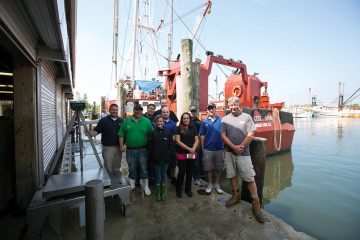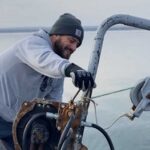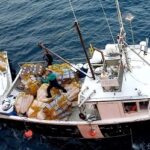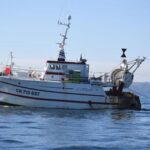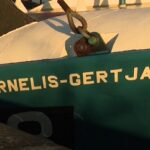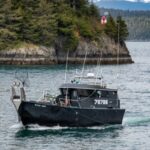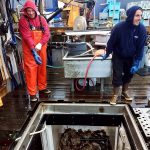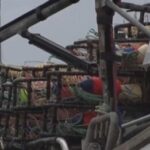Monthly Archives: August 2016
As US’ first offshore wind farm takes root, study indicates wind may be more powerful, turbulent than expected
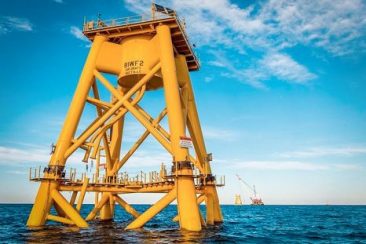 University of Delaware researchers report in a new study that offshore wind may be more powerful, yet more turbulent than expected in the North Eastern United States. The findings, published in a paper in theJournal of Geophysical Research: Atmospheres, could have important implications for the future development of offshore wind farms in the U.S., including the assessment of how much wind power can be produced, what type of turbines should be used, how many turbines should be installed and the spacing between each. The paper’s main finding is that atmospheric conditions around Cape Wind are predominantly turbulent, or unstable, which is in stark contrast to prevailing data from European offshore wind farms in the Baltic Sea and the North Sea. “By contrast, our study found that wind conditions at Cape Wind are unstable between 40 and 80 percent of the time, depending on season and time of day,” Read the story here 20:55
University of Delaware researchers report in a new study that offshore wind may be more powerful, yet more turbulent than expected in the North Eastern United States. The findings, published in a paper in theJournal of Geophysical Research: Atmospheres, could have important implications for the future development of offshore wind farms in the U.S., including the assessment of how much wind power can be produced, what type of turbines should be used, how many turbines should be installed and the spacing between each. The paper’s main finding is that atmospheric conditions around Cape Wind are predominantly turbulent, or unstable, which is in stark contrast to prevailing data from European offshore wind farms in the Baltic Sea and the North Sea. “By contrast, our study found that wind conditions at Cape Wind are unstable between 40 and 80 percent of the time, depending on season and time of day,” Read the story here 20:55
Sweden delivers salvo in lobster ban fight – Stand by for News!
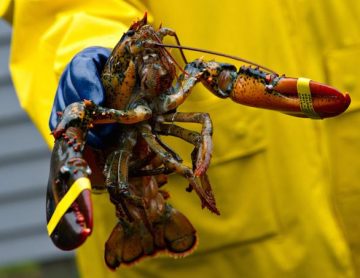 NOAA Fisheries will brief staff from the Massachusetts congressional delegation Friday on Sweden’s response to the joint U.S.-Canadian scientific effort to keep the American lobster from being included on the European Union’s list of invasive species. Carrie Rankin, spokeswoman for U.S. Rep. Seth Moulton, said the Salem congressman’s office was informed Thursday of the briefing, but was not yet made privy to the Swedish response to the scientific analysis mounted in June by the U.S. government, trade officials, marine scientists and lobster stakeholders. “We don’t know what the official response is yet because we haven’t seen it,” Rankin said Thursday. “We’ll know a lot more (Friday) after the briefing.” “NOAA is working closely with Canada and other U.S. agencies on an official response, which I can share with you when available.” Read the rest here 19:59
NOAA Fisheries will brief staff from the Massachusetts congressional delegation Friday on Sweden’s response to the joint U.S.-Canadian scientific effort to keep the American lobster from being included on the European Union’s list of invasive species. Carrie Rankin, spokeswoman for U.S. Rep. Seth Moulton, said the Salem congressman’s office was informed Thursday of the briefing, but was not yet made privy to the Swedish response to the scientific analysis mounted in June by the U.S. government, trade officials, marine scientists and lobster stakeholders. “We don’t know what the official response is yet because we haven’t seen it,” Rankin said Thursday. “We’ll know a lot more (Friday) after the briefing.” “NOAA is working closely with Canada and other U.S. agencies on an official response, which I can share with you when available.” Read the rest here 19:59
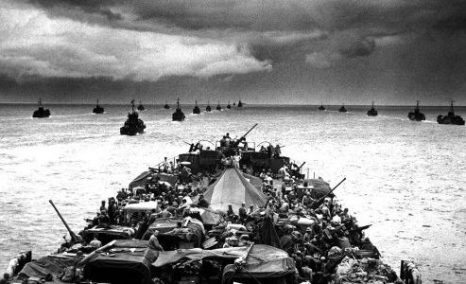
The Long Blue Line: The “Gold Dust Twins” and the battle of Guadalcanal (Part 1)
Written by William H. Thiesen, Coast Guard Atlantic Area historian – The Guadalcanal campaign began on Thursday, August 7, 1942, exactly eight months after the Japanese attack on Pearl Harbor. With its lush jungle cover and tropical waters, Guadalcanal was a picturesque contrast of deep green and azure blue. But for all its natural beauty, Guadalcanal was also a fearful place to fight a war. On “the Canal,” the Americans would fight two enemies–the Japanese and the jungle. In late summer and early fall, the island boasted a steamy climate with searing temperatures and daily monsoon-like rains. Man-eating sharks and saltwater crocodiles patrolled the local waters. Top it off with swarms of disease-ridden mosquitoes carrying dengue fever, malaria and yellow fever and it becomes clear why Marines called Guadalcanal “the green hell.” At 2:30 p.m. on August 9, Coast Guard Lt. Cmdr. Dwight Dexter came ashore to establish the Naval Local Defense Force and Anti-Submarine Patrol, also known as Naval Operating Base (NOB) “Cactus” (Cactus being the code name for Guadalcanal), or NOB Cactus. This would become the first and only known case of a Naval Operating Base manned and run primarily by the Coast Guard. Known as “the Old Man,” Dexter was,, Read the story here 18:24
Coast Guard medevacs 2 ailing fishermen from 2 different vessels off Atlantic City, NJ
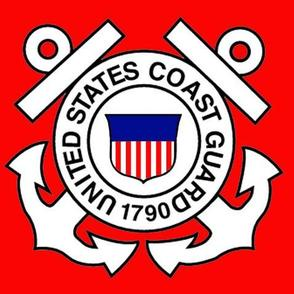 The Coast Guard medevaced two fishermen from two separate fishing vessels near Atlantic City, New Jersey Thursday. Watchstanders at Coast Guard Sector Delaware Bay received a report at 9:55 a.m. of two fishermen who were experiencing severe seasickness approximately 60 miles east of Atlantic City. Sector Delaware Bay watchstanders launched an MH-65 Dolphin helicopter air crew from Coast Guard Air Station Atlantic City to respond. The first fisherman was hoisted at 11:30 a.m. from the 94-foot fishing vessel Vila Nova Do Corvo. The second fisherman was hoisted at 12:15 p.m. from the 74-foot fishing vessel Perola Do Corvo. Both vessels are home ported in New Haven, Connecticut. The Atlantic City air crew transported the ailing persons to awaiting Emergency Medical Services personnel at Air Station Atlantic City. The EMS crew brought the survivors to AtlantiCare Regional Medical Center in Atlantic City, N.J. for treatment. Link 17:50
The Coast Guard medevaced two fishermen from two separate fishing vessels near Atlantic City, New Jersey Thursday. Watchstanders at Coast Guard Sector Delaware Bay received a report at 9:55 a.m. of two fishermen who were experiencing severe seasickness approximately 60 miles east of Atlantic City. Sector Delaware Bay watchstanders launched an MH-65 Dolphin helicopter air crew from Coast Guard Air Station Atlantic City to respond. The first fisherman was hoisted at 11:30 a.m. from the 94-foot fishing vessel Vila Nova Do Corvo. The second fisherman was hoisted at 12:15 p.m. from the 74-foot fishing vessel Perola Do Corvo. Both vessels are home ported in New Haven, Connecticut. The Atlantic City air crew transported the ailing persons to awaiting Emergency Medical Services personnel at Air Station Atlantic City. The EMS crew brought the survivors to AtlantiCare Regional Medical Center in Atlantic City, N.J. for treatment. Link 17:50
St. Mary’s Watermen: One License Revoked, Another Charged with Fraud
 A St. Mary’s County man had his commercial oyster license revoked after he was convicted last Thursday of harvesting oysters from polluted waters. Andrew Phillip Nelson, 20, of Hollywood, was charged in May with catching oysters from St. Inigoes Creek off the St. Mary’s River, an area closed to harvesting by the Maryland Department of the Environment because of pollution. A St. Mary’s County waterman has been criminally charged with running a commercial fishing fraud scheme, the Maryland Natural Resources Police reported. Robert Maurice Lumpkins, 62, of Piney Point, was charged Friday with perjury, false entry in a public record and theft between $10,000 and $100,000 for illegally obtaining the striped bass allocation of an ailing waterman and then allowing an employee to temporarily use the allocation. Read the rest here 15:41
A St. Mary’s County man had his commercial oyster license revoked after he was convicted last Thursday of harvesting oysters from polluted waters. Andrew Phillip Nelson, 20, of Hollywood, was charged in May with catching oysters from St. Inigoes Creek off the St. Mary’s River, an area closed to harvesting by the Maryland Department of the Environment because of pollution. A St. Mary’s County waterman has been criminally charged with running a commercial fishing fraud scheme, the Maryland Natural Resources Police reported. Robert Maurice Lumpkins, 62, of Piney Point, was charged Friday with perjury, false entry in a public record and theft between $10,000 and $100,000 for illegally obtaining the striped bass allocation of an ailing waterman and then allowing an employee to temporarily use the allocation. Read the rest here 15:41
The Science Suggests a Marine Reserve Zone Won’t Save Biscayne’s Reefs
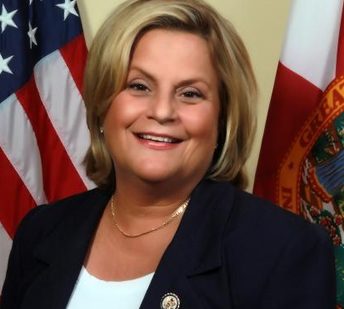 As many of you know, I have been proud to help lead a bipartisan group of Florida’s Congressional leaders, including Democrats like Sen. Bill Nelson and Rep. Gwen Graham, and Republicans like Sen. Rubio and Reps. Carlos Curbelo and Mario Diaz-Balart to ensure that Biscayne National Park utilizes the best science to conserve its environmental treasures while preserving our community’s right to access and enjoy all that Biscayne has to offer. In fact, the statutory language that created the National Park Service (NPS) – the Organic Act of 1916 – is still in force today and mandates just that! The NPS, by law, must conserve the nation’s natural resources and promote the public’s use and enjoyment of those resources. The Marine Reserve Zone proposed for Biscayne National Park that would eliminate fishing in more than 10,500 acres of prime reef fishing habitat with the goal of protecting Biscayne’s vulnerable coral reefs violates not only the spirit of the Organic Act, but also fails to use the best science to design and implement successful coral reef conservation strategies. Read the rest here 14:52
As many of you know, I have been proud to help lead a bipartisan group of Florida’s Congressional leaders, including Democrats like Sen. Bill Nelson and Rep. Gwen Graham, and Republicans like Sen. Rubio and Reps. Carlos Curbelo and Mario Diaz-Balart to ensure that Biscayne National Park utilizes the best science to conserve its environmental treasures while preserving our community’s right to access and enjoy all that Biscayne has to offer. In fact, the statutory language that created the National Park Service (NPS) – the Organic Act of 1916 – is still in force today and mandates just that! The NPS, by law, must conserve the nation’s natural resources and promote the public’s use and enjoyment of those resources. The Marine Reserve Zone proposed for Biscayne National Park that would eliminate fishing in more than 10,500 acres of prime reef fishing habitat with the goal of protecting Biscayne’s vulnerable coral reefs violates not only the spirit of the Organic Act, but also fails to use the best science to design and implement successful coral reef conservation strategies. Read the rest here 14:52
A renewed aquaculture lease for Kelly Cove Salmon stirs up Shelburne Harbour neighbours
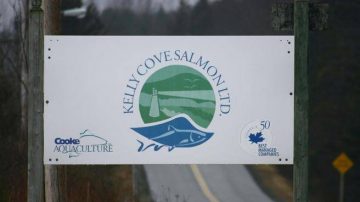 A renewed aquaculture lease for Kelly Cove Salmon in Shelburne Harbour is raising local ire before the first fish is in the water. The Nova Scotia Department of Fisheries and Aquaculture has set an August 19 deadline for public comment on lease 0602, a 10-year licence and 20-year lease for a 20-hectare suspended cage cultivation of Atlantic salmon and rainbow trout. Shelly Hipson lives in the nearby village of Atlantic and she has a laundry list of objections to the Sandy Point site, including the size of the 0602 farm. Hipson cites concerns for the local lobster industry, and a February 2014 letter to the province from the Conservation Council of New Brunswick that found part of the harbour floor in the area was essentially dead. “Where do we think that’s going, excrement from a million fish? If my septic was running out into the harbour I’d be charged,” Hipson said. Read the story here 12:25
A renewed aquaculture lease for Kelly Cove Salmon in Shelburne Harbour is raising local ire before the first fish is in the water. The Nova Scotia Department of Fisheries and Aquaculture has set an August 19 deadline for public comment on lease 0602, a 10-year licence and 20-year lease for a 20-hectare suspended cage cultivation of Atlantic salmon and rainbow trout. Shelly Hipson lives in the nearby village of Atlantic and she has a laundry list of objections to the Sandy Point site, including the size of the 0602 farm. Hipson cites concerns for the local lobster industry, and a February 2014 letter to the province from the Conservation Council of New Brunswick that found part of the harbour floor in the area was essentially dead. “Where do we think that’s going, excrement from a million fish? If my septic was running out into the harbour I’d be charged,” Hipson said. Read the story here 12:25
Expanding Antiquities Act Monument Would Set A Dangerous Precedent
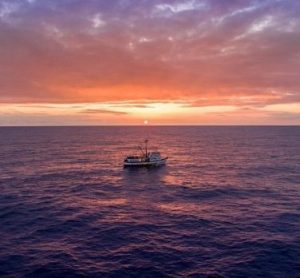 The National Oceanographic and Atmospheric Administration and U.S. Fish and Wildlife Service recently held a public meeting to discuss the proposed expansion of the Papahanaumokuakea Marine National Monument. Proponents of the expansion stand behind the request of and a group of seven Native Hawaiians for President Barack Obama to consider invoking the Antiquities Act of 1906 to expand the existing 50 mile monument boundary four-fold. The new monument would include nearly all of the Exclusive Economic Zone surrounding the Northwestern Hawaiian Islands and a whopping 60 percent of the greater Hawaiian Islands EEZ. In the case of Schatz’s proposal for monument expansion the concept of due process has been forsaken completely. The idea that sound science must be a basis for decision making has been abandoned in the face of a perceived urgency. Instead, the proposal has served to undermine the very structures we have in place to preserve a fair and equitable means of addressing public concerns about a shared resource (read up on Magnuson-Stevens Fisheries Conservation and Management Act.) Read the op-ed here 10:23
The National Oceanographic and Atmospheric Administration and U.S. Fish and Wildlife Service recently held a public meeting to discuss the proposed expansion of the Papahanaumokuakea Marine National Monument. Proponents of the expansion stand behind the request of and a group of seven Native Hawaiians for President Barack Obama to consider invoking the Antiquities Act of 1906 to expand the existing 50 mile monument boundary four-fold. The new monument would include nearly all of the Exclusive Economic Zone surrounding the Northwestern Hawaiian Islands and a whopping 60 percent of the greater Hawaiian Islands EEZ. In the case of Schatz’s proposal for monument expansion the concept of due process has been forsaken completely. The idea that sound science must be a basis for decision making has been abandoned in the face of a perceived urgency. Instead, the proposal has served to undermine the very structures we have in place to preserve a fair and equitable means of addressing public concerns about a shared resource (read up on Magnuson-Stevens Fisheries Conservation and Management Act.) Read the op-ed here 10:23
Proposal to increase commercial fishing license fees unveiled by the Washington Department of Fish and Wildlife.
 A proposal to increase commercial fishing license fees — including a new crew member charge — has been unveiled by the Washington Department of Fish and Wildlife. John Long, the agency’s regional director in Southwest Washington, told a public meeting in Vancouver on Monday the proposal would generate about $1 million from fee increases. Another portion of the proposal calls for redirecting revenue from commercial fees and an existing fish landing tax into the state Wildlife Account. Currently, that money goes into the state General Fund. Long said redirecting the money would generate an additional $3.6 million for the Department of Fish and Wildlife. The proposals require approval of the state Legislature. The agency needs $24 million in new revenue to maintain existing programs, he added. Read the rest here 09:51
A proposal to increase commercial fishing license fees — including a new crew member charge — has been unveiled by the Washington Department of Fish and Wildlife. John Long, the agency’s regional director in Southwest Washington, told a public meeting in Vancouver on Monday the proposal would generate about $1 million from fee increases. Another portion of the proposal calls for redirecting revenue from commercial fees and an existing fish landing tax into the state Wildlife Account. Currently, that money goes into the state General Fund. Long said redirecting the money would generate an additional $3.6 million for the Department of Fish and Wildlife. The proposals require approval of the state Legislature. The agency needs $24 million in new revenue to maintain existing programs, he added. Read the rest here 09:51
Low-Powered LED Lights Can Improve Snow Crab Catchability
 The Atlantic Canada snow crab (Chionoecetes opilio) fishery may have started out as a bycatch fishery over 60 years ago, but today it has become the second most valuable export fishery in Canada. In 2013, The Newfoundland and Labrador snow crab fishery had the honour (rolls eyes) of becoming the 200th fishery to receive Marine Stewardship Council (MSC) certification. Improving the catchability of snow crab, as for any fishery, has garnered significant interest, though can be challenging to achieve. At the fourth International Marine Conservation Congress, PHD candidate Khanh Nguyen, who is based at Marine Institute, Memorial University of Newfoundland, described one way snow crab fisheries can increase catchability – and without spending vast amounts of money redesigning gear. Mr Nguyen’s research has focused on exploiting the snow crab’s biology – specifically its ability to detect and react to lights. A number of marine species are known to be attracted to lights, with some commercial fisheries, such as squid jigging, using lights to lure their prey. Whereas some fisheries use relatively powerful lights, Mr Nguyen’s interest was in the use of low powered, coloured LED lights. Read the article here 09:24
The Atlantic Canada snow crab (Chionoecetes opilio) fishery may have started out as a bycatch fishery over 60 years ago, but today it has become the second most valuable export fishery in Canada. In 2013, The Newfoundland and Labrador snow crab fishery had the honour (rolls eyes) of becoming the 200th fishery to receive Marine Stewardship Council (MSC) certification. Improving the catchability of snow crab, as for any fishery, has garnered significant interest, though can be challenging to achieve. At the fourth International Marine Conservation Congress, PHD candidate Khanh Nguyen, who is based at Marine Institute, Memorial University of Newfoundland, described one way snow crab fisheries can increase catchability – and without spending vast amounts of money redesigning gear. Mr Nguyen’s research has focused on exploiting the snow crab’s biology – specifically its ability to detect and react to lights. A number of marine species are known to be attracted to lights, with some commercial fisheries, such as squid jigging, using lights to lure their prey. Whereas some fisheries use relatively powerful lights, Mr Nguyen’s interest was in the use of low powered, coloured LED lights. Read the article here 09:24
NOAA To Enlist Commercial Fishing Boats To Help Gather Data For Stock Surveys
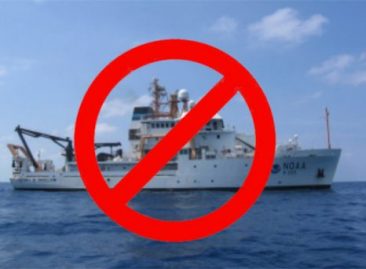 The National Oceanic and Atmospheric Administration has announced it will begin enlisting commercial fishing boats to help gather data for its often-controversial stock surveys – shifting that task at least partially away from its research vessel Henry T. Bigelow(sic). The Bigelow has experienced a number of maintenance issues, which caused a two-month delay in this year’s Spring survey. Fishing advocates are hailing NOAA’s decision, which was spearheaded by the outgoing director of the NOAA Science Center in Woods Hole. They say it represents a realization of the need for greater cooperation among regulators and fishermen. Brian Morris spoke with Don Cuddy of the Center for Sustainable Fisheries about the upcoming change. Listen to the audio report here 08:44
The National Oceanic and Atmospheric Administration has announced it will begin enlisting commercial fishing boats to help gather data for its often-controversial stock surveys – shifting that task at least partially away from its research vessel Henry T. Bigelow(sic). The Bigelow has experienced a number of maintenance issues, which caused a two-month delay in this year’s Spring survey. Fishing advocates are hailing NOAA’s decision, which was spearheaded by the outgoing director of the NOAA Science Center in Woods Hole. They say it represents a realization of the need for greater cooperation among regulators and fishermen. Brian Morris spoke with Don Cuddy of the Center for Sustainable Fisheries about the upcoming change. Listen to the audio report here 08:44
Murky outlook for the upcoming Dungeness crab season
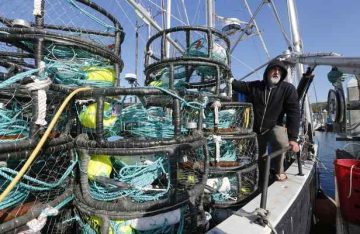 The upcoming Dungeness crab season will likely be affected by harmful algal blooms that contaminate seafood with a potent biotoxin, but the impact on commercial fishing probably won’t be as severe as it was in 2015-16, when the season was disrupted by an unprecedented closure, experts said Wednesday. At a special hearing Wednesday in Sacramento, a leading researcher on algal blooms said ocean temperatures are down this year, but still warmer than normal, and blooms are developing off the Central Coast and in other locations. But right now he is not predicting widespread blooms that would cause a statewide shutdown, as was the case last season. The lousy crab season was bracketed by weak salmon seasons linked to the drought, which has degraded river conditions for young salmon making their way out to sea. “After having a poor salmon season, a poor crab season, now another poor salmon season, it’s definitely really hard on the guys,” said Jim Anderson, a fisherman based at Pillar Point Harbor in San Mateo County. Read the story here 08:19
The upcoming Dungeness crab season will likely be affected by harmful algal blooms that contaminate seafood with a potent biotoxin, but the impact on commercial fishing probably won’t be as severe as it was in 2015-16, when the season was disrupted by an unprecedented closure, experts said Wednesday. At a special hearing Wednesday in Sacramento, a leading researcher on algal blooms said ocean temperatures are down this year, but still warmer than normal, and blooms are developing off the Central Coast and in other locations. But right now he is not predicting widespread blooms that would cause a statewide shutdown, as was the case last season. The lousy crab season was bracketed by weak salmon seasons linked to the drought, which has degraded river conditions for young salmon making their way out to sea. “After having a poor salmon season, a poor crab season, now another poor salmon season, it’s definitely really hard on the guys,” said Jim Anderson, a fisherman based at Pillar Point Harbor in San Mateo County. Read the story here 08:19
What’s Fishy About the Feds’ Salmon Promises?
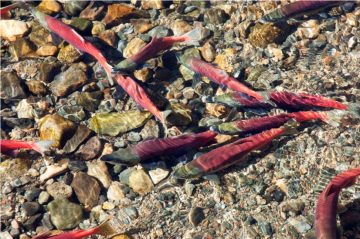 As federal Fisheries and Oceans Minister Dominic LeBlanc was in West Vancouver Tuesday, promising that his government would act on all 75 recommendations from the 2012 Cohen Commission into the decline of Fraser River sockeye salmon, independent biologist Alexandra Morton was sailing into friendly waters on northern Vancouver Island and casting doubt on the government’s intentions. “There is no substance to it,” said Morton, pointing out that LeBlanc has avoided any commitment to act on the Cohen recommendation to separate promotion of aquaculture from its duty to protect wild salmon or to put the brakes on the salmon farming industry. The progress report, delivered by LeBlanc, noted that Fisheries and Oceans oversight of salmon farming meshes with the department’s mandate and LeBlanc said at the news conference that DFO has a responsibility to promote the sustainable use of “fish resources in a way that is good for the local economy.” That does not go down well with Morton, a thorn in the side of the salmon farming industry and the Department of Fisheries and Oceans for decades. Read the story here 20:22
As federal Fisheries and Oceans Minister Dominic LeBlanc was in West Vancouver Tuesday, promising that his government would act on all 75 recommendations from the 2012 Cohen Commission into the decline of Fraser River sockeye salmon, independent biologist Alexandra Morton was sailing into friendly waters on northern Vancouver Island and casting doubt on the government’s intentions. “There is no substance to it,” said Morton, pointing out that LeBlanc has avoided any commitment to act on the Cohen recommendation to separate promotion of aquaculture from its duty to protect wild salmon or to put the brakes on the salmon farming industry. The progress report, delivered by LeBlanc, noted that Fisheries and Oceans oversight of salmon farming meshes with the department’s mandate and LeBlanc said at the news conference that DFO has a responsibility to promote the sustainable use of “fish resources in a way that is good for the local economy.” That does not go down well with Morton, a thorn in the side of the salmon farming industry and the Department of Fisheries and Oceans for decades. Read the story here 20:22
Frustrated fishermen meet with new NC fisheries director Braxton Davis
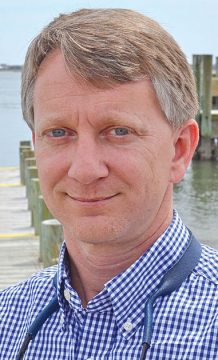 About 50 exasperated, even angry, commercial fishermen gathered Monday to meet the new director of the North Carolina agency that governs how these watermen make a living. They came to the Dare County offices from towns east and west of the Albemarle and Pamlico sounds, ranging from Hatteras Village to Elizabeth City. They came to voice frustrations and ask questions about what they believe are unfair and arbitrary regulations that shrink their livelihood. Southern flounder harvest restrictions and sea turtle conservation efforts were sore points. Sea turtles are best with “taters and onions,” said Sharon Peele Kennedy, a member of the board of directors for Outer Banks Catch, a group that advocates for local fishing and seafood. This fight is old for fishermen on the Outer Banks, but their opponent has a new face, Braxton Davis, who in April became director of the North Carolina Division of Marine Fisheries and the Division of Coastal Management after the last director resigned. Davis was not tanned. His hair was neatly coiffed and he wore a button-down collared shirt with the sleeves rolled up. He said he’s experienced in coastal issues, but acknowledged his fishing experience was limited to occasional recreational trips. Read the rest here 19:04
About 50 exasperated, even angry, commercial fishermen gathered Monday to meet the new director of the North Carolina agency that governs how these watermen make a living. They came to the Dare County offices from towns east and west of the Albemarle and Pamlico sounds, ranging from Hatteras Village to Elizabeth City. They came to voice frustrations and ask questions about what they believe are unfair and arbitrary regulations that shrink their livelihood. Southern flounder harvest restrictions and sea turtle conservation efforts were sore points. Sea turtles are best with “taters and onions,” said Sharon Peele Kennedy, a member of the board of directors for Outer Banks Catch, a group that advocates for local fishing and seafood. This fight is old for fishermen on the Outer Banks, but their opponent has a new face, Braxton Davis, who in April became director of the North Carolina Division of Marine Fisheries and the Division of Coastal Management after the last director resigned. Davis was not tanned. His hair was neatly coiffed and he wore a button-down collared shirt with the sleeves rolled up. He said he’s experienced in coastal issues, but acknowledged his fishing experience was limited to occasional recreational trips. Read the rest here 19:04
Baker-Polito Administration announces launch of Seafood Marketing Program
 The Baker-Polito Administration today announced the launch of a seafood marketing program aimed to increase awareness and demand for local seafood products and support Massachusetts’ fishing and seafood industries. The Massachusetts Seafood Marketing Program kicked off its formal marketing efforts this weekend, participating in the 5th annual Boston Seafood Festival at the Boston Fish Pier and sponsoring a Cambridge chef’s participation in a national cooking competition in New Orleans. “Through the Seafood Marketing Program, we will work with commercial fishermen, seafood processors, retailers, restaurants and fishing communities to promote the sale of sustainably-harvested Massachusetts seafood products both locally and in markets around the world,” said Governor Charlie Baker. “Our administration is committed to ensuring the future viability of the Commonwealth’s commercial fishing industry and creating a vibrant food economy in Massachusetts. Read the rest here 18:53
The Baker-Polito Administration today announced the launch of a seafood marketing program aimed to increase awareness and demand for local seafood products and support Massachusetts’ fishing and seafood industries. The Massachusetts Seafood Marketing Program kicked off its formal marketing efforts this weekend, participating in the 5th annual Boston Seafood Festival at the Boston Fish Pier and sponsoring a Cambridge chef’s participation in a national cooking competition in New Orleans. “Through the Seafood Marketing Program, we will work with commercial fishermen, seafood processors, retailers, restaurants and fishing communities to promote the sale of sustainably-harvested Massachusetts seafood products both locally and in markets around the world,” said Governor Charlie Baker. “Our administration is committed to ensuring the future viability of the Commonwealth’s commercial fishing industry and creating a vibrant food economy in Massachusetts. Read the rest here 18:53
New Port of Garibaldi tenant, Tillamook Bay Seafoods, to sell fresh, canned and frozen local fish and shellfish
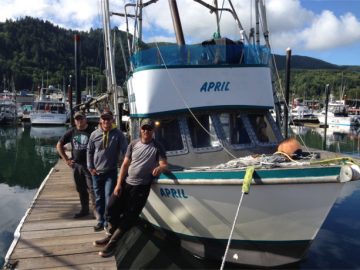 Last summer, the Port of Garibaldi oversaw improvements to Commercial Avenue where it connects to a new pier, including undergrounding utilities and prepping the area for sidewalks, in hopes of making the area attractive to future tenants. This summer, Tillamook Bay Seafoods is one of the first to sign a lease to operate a business on the commercial wharf. “We’re hoping to have at least part of the building finished by Jan. 1,” said Jeremy Coon, who co-owns Tillamook Bay Seafoods as well as a commercial crab boat, with his brother Jesse Coon. The business will occupy a 100-foot-by-140-foot lot on the northeast corner of the new pier. “We should have a crab-holding facility and a roof on it by then.” However, this summer, Coon will settle for a new fish hoist. And thanks to a grant from Rural Development Initiatives, he’ll get one soon. Read the story here 15:03
Last summer, the Port of Garibaldi oversaw improvements to Commercial Avenue where it connects to a new pier, including undergrounding utilities and prepping the area for sidewalks, in hopes of making the area attractive to future tenants. This summer, Tillamook Bay Seafoods is one of the first to sign a lease to operate a business on the commercial wharf. “We’re hoping to have at least part of the building finished by Jan. 1,” said Jeremy Coon, who co-owns Tillamook Bay Seafoods as well as a commercial crab boat, with his brother Jesse Coon. The business will occupy a 100-foot-by-140-foot lot on the northeast corner of the new pier. “We should have a crab-holding facility and a roof on it by then.” However, this summer, Coon will settle for a new fish hoist. And thanks to a grant from Rural Development Initiatives, he’ll get one soon. Read the story here 15:03
Athearn Marine Agency Boat of the Week: 34′ Fiberglass Duffy Tuna/Lobster, 220HP, 6 Cylinder John Deere
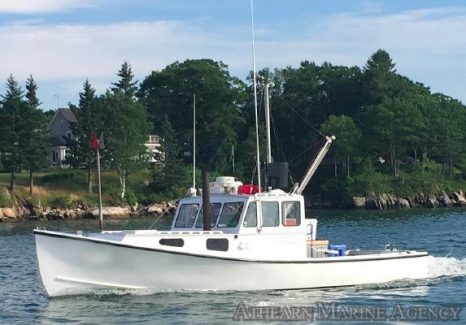 Specifications, information and 8 photo’s click here To see all the boats in this series, Click here 12:45
Specifications, information and 8 photo’s click here To see all the boats in this series, Click here 12:45
Maritime Fishermen’s Union invests $300k in lighter life jackets to save lives
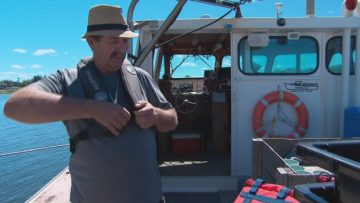 New Brunswick lobster fishermen were handed free life jackets on the first day of lobster season, with the hopes of getting more of them to actually wear the life-savers. The fishermen’s union started handing out the jackets, estimated to be worth approximately $300 each, to about a thousand fishermen in Southeastern New Brunswick. The move is an effort by the union to get its fishermen to take safety more seriously. Despite repeated boating accidents, some fatal, getting fishermen to wear life jackets on the job has been a constant struggle — especially when it comes to the older generation. “It’s still difficult,” said Christian Brun, executive director of the Maritime Fishermen’s Union. Read the rest here 12:02
New Brunswick lobster fishermen were handed free life jackets on the first day of lobster season, with the hopes of getting more of them to actually wear the life-savers. The fishermen’s union started handing out the jackets, estimated to be worth approximately $300 each, to about a thousand fishermen in Southeastern New Brunswick. The move is an effort by the union to get its fishermen to take safety more seriously. Despite repeated boating accidents, some fatal, getting fishermen to wear life jackets on the job has been a constant struggle — especially when it comes to the older generation. “It’s still difficult,” said Christian Brun, executive director of the Maritime Fishermen’s Union. Read the rest here 12:02
$1.25 Million Judgment Awarded to Injured Fisherman
 Attorney Matthew Shaffer obtained a $1.25 million dollar judgement from a federal district court in Galveston, Texas for his client, a commercial fisherman. The 54-year-old worker from Palacios, Texas was tying lines on a commercial fishing boat when he became trapped in marsh wetlands. He injured his knees and legs trying to free himself, but his boat and Captain abandoned him in the wetlands. Attorney Matthew Shaffer filed suit on behalf of the worker against the vessel owner and employer, alleging negligence under the Jones Act and failure to provide maintenance and cure benefits. “This worker was literally abandoned by the boat and its owner,” says Shaffer. “They left him injured and alone and failed to assist him in any form after he was injured. The employer has failed to pay for medical treatment or even pay for meager daily maintenance to keep a roof over our client’s head and food in his belly. We are so pleased that the Court ruled in his favor. We will continue to use all our efforts to obtain justice for this deserving worker.” Link 11:25
Attorney Matthew Shaffer obtained a $1.25 million dollar judgement from a federal district court in Galveston, Texas for his client, a commercial fisherman. The 54-year-old worker from Palacios, Texas was tying lines on a commercial fishing boat when he became trapped in marsh wetlands. He injured his knees and legs trying to free himself, but his boat and Captain abandoned him in the wetlands. Attorney Matthew Shaffer filed suit on behalf of the worker against the vessel owner and employer, alleging negligence under the Jones Act and failure to provide maintenance and cure benefits. “This worker was literally abandoned by the boat and its owner,” says Shaffer. “They left him injured and alone and failed to assist him in any form after he was injured. The employer has failed to pay for medical treatment or even pay for meager daily maintenance to keep a roof over our client’s head and food in his belly. We are so pleased that the Court ruled in his favor. We will continue to use all our efforts to obtain justice for this deserving worker.” Link 11:25
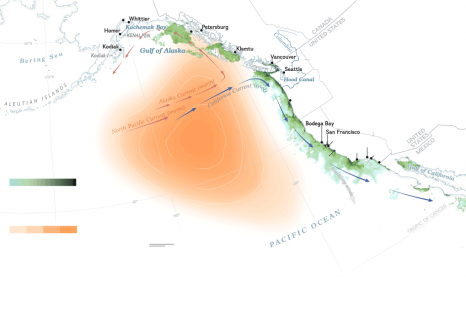
The Blob That Cooked the Pacific
Beginning in late 2013, a bewildering patch of warm water formed in the Gulf of Alaska. A stubborn atmospheric high-pressure system, nicknamed the “Ridiculously Resilient Ridge,” was keeping storms at bay. Just as blowing across hot coffee frees heat, winds usually churn and cool the sea’s surface. Instead, heat within this shifting mass, which University of Washington climatologist Nick Bond dubbed “the blob,” built up and morphed into a wider patch along North America’s West Coast, where it met warm-water masses creeping north. Sea temperatures in some places rose seven degrees Fahrenheit higher than average. Some patches of ocean were hotter than ever recorded. At its peak the warm water covered about 3.5 million square miles from Mexico to Alaska, an area larger than the contiguous United States. Read the story here 10:40
One of Sheepshead Bay’s last fishing boat captains says he’ll go down with the ships
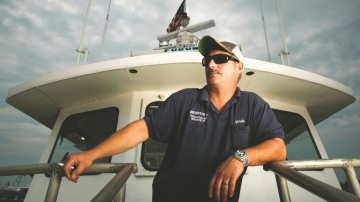 To Robert Sapanara, the sea is friend and foe, but his passion for it remains undeterred. “There are no words to describe how breathtaking the ocean can be, and I’ve seen it at its best and I’ve seen it at its worst, and I love them both,” said Sapanara, 50, the captain of the 110-foot-long Brooklyn VI fishing boat, docked between voyages at Pier 6 in Brooklyn’s Sheepshead Bay. On a good excursion, his customers— recreational fishers—can easily fill their buckets with the day’s catch; at other times, the fish don’t bite as readily. “Fish aren’t trees, but have heads and tails,” said Sapanara, who has steered his vessel as far as 100 miles from the shore to catch fresh tuna. For about a dozen years, the married father of two sons has worked five days a week as a marine oiler at the Staten Island Ferry’s maintenance operations in order to score health insurance. Read the story here 09:57
To Robert Sapanara, the sea is friend and foe, but his passion for it remains undeterred. “There are no words to describe how breathtaking the ocean can be, and I’ve seen it at its best and I’ve seen it at its worst, and I love them both,” said Sapanara, 50, the captain of the 110-foot-long Brooklyn VI fishing boat, docked between voyages at Pier 6 in Brooklyn’s Sheepshead Bay. On a good excursion, his customers— recreational fishers—can easily fill their buckets with the day’s catch; at other times, the fish don’t bite as readily. “Fish aren’t trees, but have heads and tails,” said Sapanara, who has steered his vessel as far as 100 miles from the shore to catch fresh tuna. For about a dozen years, the married father of two sons has worked five days a week as a marine oiler at the Staten Island Ferry’s maintenance operations in order to score health insurance. Read the story here 09:57
Awesome Underwater Footage of a White Shark Eating a Grey Seal
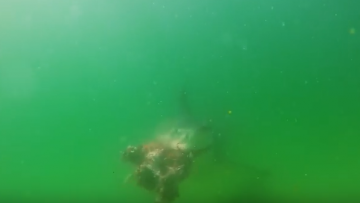 Researchers at the Atlantic White Shark Conservancy snagged video this week of a white shark swimming with her meal. That’s right, the shark is a she. And she is carrying the remains of a grey seal. The shark was later identified by Marine Fisheries Biologist John Chisholm as an 11-foot female first seen last year. The footage was captured by Greg Skomal of the Massachusetts Division of Marine Fisheries, who used a GoPro. Watch the video here 09:25
Researchers at the Atlantic White Shark Conservancy snagged video this week of a white shark swimming with her meal. That’s right, the shark is a she. And she is carrying the remains of a grey seal. The shark was later identified by Marine Fisheries Biologist John Chisholm as an 11-foot female first seen last year. The footage was captured by Greg Skomal of the Massachusetts Division of Marine Fisheries, who used a GoPro. Watch the video here 09:25
Petersburg fishermen make big catch – nearly 400-pound halibut
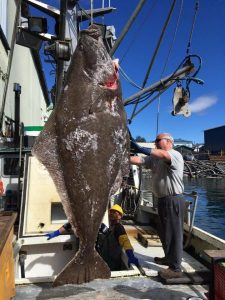 A nearly 400-pound halibut caught by local fishermen near Petersburg over the weekend wasn’t record breaking, but was still pretty darn huge. Petersburg fishermen Brian Mattson and Doug Corl were out long-lining in Frederick Sound when they had an unexpected visitor. “Didn’t even know it was on until we saw it from the surface,” Mattson said. “Put the shark hook on it, used the winch to bring it up and didn’t even make a move whatsoever, it just came right in nice and easy.” He’s talking about a 396-pound halibut. The fish would have to weigh into the upper 400s to beat the world record. Petersburg Fisheries Inc., or PFI, one of Petersburg’s main fish processers, was bustling with workers, but a handful of people made their way outside to watch the F/V Day Spring pull up to unload an unusually large fish. Read the rest here 19:12
A nearly 400-pound halibut caught by local fishermen near Petersburg over the weekend wasn’t record breaking, but was still pretty darn huge. Petersburg fishermen Brian Mattson and Doug Corl were out long-lining in Frederick Sound when they had an unexpected visitor. “Didn’t even know it was on until we saw it from the surface,” Mattson said. “Put the shark hook on it, used the winch to bring it up and didn’t even make a move whatsoever, it just came right in nice and easy.” He’s talking about a 396-pound halibut. The fish would have to weigh into the upper 400s to beat the world record. Petersburg Fisheries Inc., or PFI, one of Petersburg’s main fish processers, was bustling with workers, but a handful of people made their way outside to watch the F/V Day Spring pull up to unload an unusually large fish. Read the rest here 19:12
The jig is up
 Richard Burgess, a groundfisherman in Gloucester, Massachusetts has an odd problem. Ordinarily, he’d be out on his boat with trawl and gill nets, catching pollock and hake–fish that are currently in abundant supply in the region, and which fetch high prices. But he isn’t out with trawl and gill nets. That’s because along with the glut of pollock they bring in, Burgess has to worry about catching too many cod. Burgess is currently among a small group of fishermen who are experimenting with electronic jigging–a new technology he hopes can help him target and catch specific, abundant species like pollock (though he is currently using it to target mackerel) and avoid catching protected species like cod. Read the story here Watch the video here 15:38
Richard Burgess, a groundfisherman in Gloucester, Massachusetts has an odd problem. Ordinarily, he’d be out on his boat with trawl and gill nets, catching pollock and hake–fish that are currently in abundant supply in the region, and which fetch high prices. But he isn’t out with trawl and gill nets. That’s because along with the glut of pollock they bring in, Burgess has to worry about catching too many cod. Burgess is currently among a small group of fishermen who are experimenting with electronic jigging–a new technology he hopes can help him target and catch specific, abundant species like pollock (though he is currently using it to target mackerel) and avoid catching protected species like cod. Read the story here Watch the video here 15:38
Fisheries Minister plans ‘concrete’ action to fight declining Fraser River sockeye run
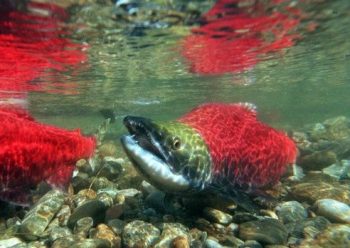 Canada’s Minister of Fisheries says the government is taking action in a ‘rigorous and robust’ way to restore the Fraser River’s sockeye salmon run, and it’s a top priority of the prime minister. Dominic LeBlanc says the federal government is committed to recommendations that came out of the Cohen Commission of Inquiry four years ago, agreeing delayed action has been “unacceptable.” He did not see an immediate need to sever the ministry mandate, to end the promotion of salmon farming, as Cohen recommended. “I wouldn’t describe it as a conflict of interest,” said LeBlanc. I think there is a way for world-class, transparent, open and available science and management decisions that are transparent to Canadians to be made with respect to aquaculture sector … that are complimentary to the protection of the wild salmon.” With the right science and regulatory regime, he said Canadians have confidence in the safety of B.C.’s beloved wild salmon Read the rest here 14:50
Canada’s Minister of Fisheries says the government is taking action in a ‘rigorous and robust’ way to restore the Fraser River’s sockeye salmon run, and it’s a top priority of the prime minister. Dominic LeBlanc says the federal government is committed to recommendations that came out of the Cohen Commission of Inquiry four years ago, agreeing delayed action has been “unacceptable.” He did not see an immediate need to sever the ministry mandate, to end the promotion of salmon farming, as Cohen recommended. “I wouldn’t describe it as a conflict of interest,” said LeBlanc. I think there is a way for world-class, transparent, open and available science and management decisions that are transparent to Canadians to be made with respect to aquaculture sector … that are complimentary to the protection of the wild salmon.” With the right science and regulatory regime, he said Canadians have confidence in the safety of B.C.’s beloved wild salmon Read the rest here 14:50
Lake Pontchartrain is crawling with crabs again, and it has the January opening of the Bonnet Carre Spillway to thank
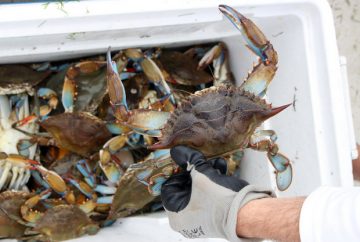 Gary Bauer, owner of Pontchartrain Blue Crab in Slidell, said crab production was abysmal in Lake Pontchartrain for three straight years, but it’s rebounded in 2016. “When I fished for a living, when the spillway was open, you knew you were going to have crabs for the next year or two,” he said. “The old-timers consider that fresh layer of silt to be like fertilizer.” A New Orleans East native, Bauer crabbed from 1979 through 1994, and opened his factory in 1999. He said both the quality and quantity of crabs have been better this year. “Lake Pontchartrain and Lake Borgne have been way off, and this year it’s been an improvement,” Bauer said. “We’re not out of the woods yet, but there is definitely an improvement.” Bauer said some fishers pull right up to his dock to sell their catch, but he also buys crabs from wholesalers based around the coast. “A lot of people who used to fish here have moved on to greener pastures, where the crab production has been better,” he said. “The first five years we were in business, we had only one truck. Now we have four. That tells you where the crabs have been coming from.” Read the story here 14:06
Gary Bauer, owner of Pontchartrain Blue Crab in Slidell, said crab production was abysmal in Lake Pontchartrain for three straight years, but it’s rebounded in 2016. “When I fished for a living, when the spillway was open, you knew you were going to have crabs for the next year or two,” he said. “The old-timers consider that fresh layer of silt to be like fertilizer.” A New Orleans East native, Bauer crabbed from 1979 through 1994, and opened his factory in 1999. He said both the quality and quantity of crabs have been better this year. “Lake Pontchartrain and Lake Borgne have been way off, and this year it’s been an improvement,” Bauer said. “We’re not out of the woods yet, but there is definitely an improvement.” Bauer said some fishers pull right up to his dock to sell their catch, but he also buys crabs from wholesalers based around the coast. “A lot of people who used to fish here have moved on to greener pastures, where the crab production has been better,” he said. “The first five years we were in business, we had only one truck. Now we have four. That tells you where the crabs have been coming from.” Read the story here 14:06
Dr. Robert E. Hueter – I am writing to share my strong opposition to S. 3095, The Shark Fin Trade Elimination Act.
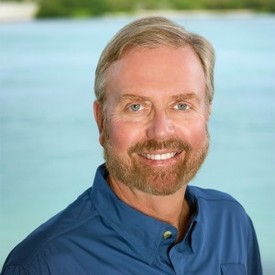 August 5, 2016 – The Honorable Bill Nelson United States Senate Washington, DC 20510 Dear Senator Nelson: I am writing to share my strong opposition to S. 3095, The Shark Fin Trade Elimination Act. As the Director of Mote Marine Laboratory’s Center for Shark Research, which was designated by Congress in 1991 as the nation’s research center for shark studies, I have more than 40 years of experience with this issue. That experience includes biological research, collaborations with fisheries, conservation education, and domestic and international policy work. As an independent, nonprofit research and education institution in Sarasota, Mote’s history of shark expertise goes back to its founding in 1955 by Dr. Eugenie Clark, our famous “Shark Lady.” While possibly well-intentioned as a measure to improve the conservation of sharks, S. 3095 will be ineffective in making a dent in the global problem of shark overfishing. Instead, it will punish the wrong people by putting American commercial fishermen, who are fishing for sharks legally and sustainably, out of business. I outline below the reasons behind my opposition and those of many of my colleagues who work closely with the fishing community: Read the letter here Read Behind the Fins: Dr. Robert E. Hueter Click here 12:05
August 5, 2016 – The Honorable Bill Nelson United States Senate Washington, DC 20510 Dear Senator Nelson: I am writing to share my strong opposition to S. 3095, The Shark Fin Trade Elimination Act. As the Director of Mote Marine Laboratory’s Center for Shark Research, which was designated by Congress in 1991 as the nation’s research center for shark studies, I have more than 40 years of experience with this issue. That experience includes biological research, collaborations with fisheries, conservation education, and domestic and international policy work. As an independent, nonprofit research and education institution in Sarasota, Mote’s history of shark expertise goes back to its founding in 1955 by Dr. Eugenie Clark, our famous “Shark Lady.” While possibly well-intentioned as a measure to improve the conservation of sharks, S. 3095 will be ineffective in making a dent in the global problem of shark overfishing. Instead, it will punish the wrong people by putting American commercial fishermen, who are fishing for sharks legally and sustainably, out of business. I outline below the reasons behind my opposition and those of many of my colleagues who work closely with the fishing community: Read the letter here Read Behind the Fins: Dr. Robert E. Hueter Click here 12:05
Draft plan unveiled to curb Southern New England lobster declines
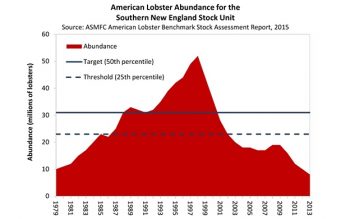 The American Lobster Management Board has released a draft plan responding to declining stocks of lobsters in Southern New England waters that will be considered by the Atlantic States Marine Fisheries Commission at its annual meeting in late October. The proposal presents a suite of management measures to increase egg production and lower harvesting mortality through a combination of management tools that include season closures, trap limits and reductions and changes in escape vent and lobster size regulations. The goal is to increase egg production for lobsters in Southern New England waters from zero to 60%. The draft responds to the 2015 American lobster benchmark stock assessment that found the Southern New England “stock severely depleted and undergoing recruitment failure with poor prospects of recovery,” according to Friday’s statement from ASMFC. Read the rest here 11:13
The American Lobster Management Board has released a draft plan responding to declining stocks of lobsters in Southern New England waters that will be considered by the Atlantic States Marine Fisheries Commission at its annual meeting in late October. The proposal presents a suite of management measures to increase egg production and lower harvesting mortality through a combination of management tools that include season closures, trap limits and reductions and changes in escape vent and lobster size regulations. The goal is to increase egg production for lobsters in Southern New England waters from zero to 60%. The draft responds to the 2015 American lobster benchmark stock assessment that found the Southern New England “stock severely depleted and undergoing recruitment failure with poor prospects of recovery,” according to Friday’s statement from ASMFC. Read the rest here 11:13
New superintendent named to head Biscayne National Park
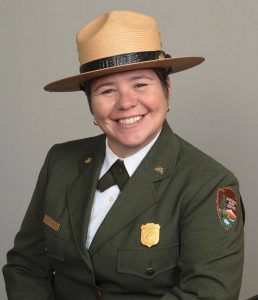 A seasoned ranger with posts in the chilly north including Glacier Bay and Crater Lake will become the new superintendent at South Florida’s subtropical Biscayne National Park, the National Park Service announced Monday. Margaret Goodro, now superintendent at Lake Clark National Park in Alaska, takes over from Brian Carlstrom. In November, Carlstrom was promoted to deputy associate director for the service after overseeing a controversial new management plan that for the first time establishes a marine preserve to help protect part of the park’s ailing reef. “I look forward to working with the park staff, stakeholders and partners to continue the great work of providing amazing recreational opportunities for visitors, while protecting and preserving this rare tropical park,” Goodro said in a statement. And while Goodro may have roots in the north where her family ran a commercial fishing business, she does have some local ties: Her spouse, Melinda, is a Tampa native. They plan to move to South Florida in late October. Read the rest here 10:38
A seasoned ranger with posts in the chilly north including Glacier Bay and Crater Lake will become the new superintendent at South Florida’s subtropical Biscayne National Park, the National Park Service announced Monday. Margaret Goodro, now superintendent at Lake Clark National Park in Alaska, takes over from Brian Carlstrom. In November, Carlstrom was promoted to deputy associate director for the service after overseeing a controversial new management plan that for the first time establishes a marine preserve to help protect part of the park’s ailing reef. “I look forward to working with the park staff, stakeholders and partners to continue the great work of providing amazing recreational opportunities for visitors, while protecting and preserving this rare tropical park,” Goodro said in a statement. And while Goodro may have roots in the north where her family ran a commercial fishing business, she does have some local ties: Her spouse, Melinda, is a Tampa native. They plan to move to South Florida in late October. Read the rest here 10:38






